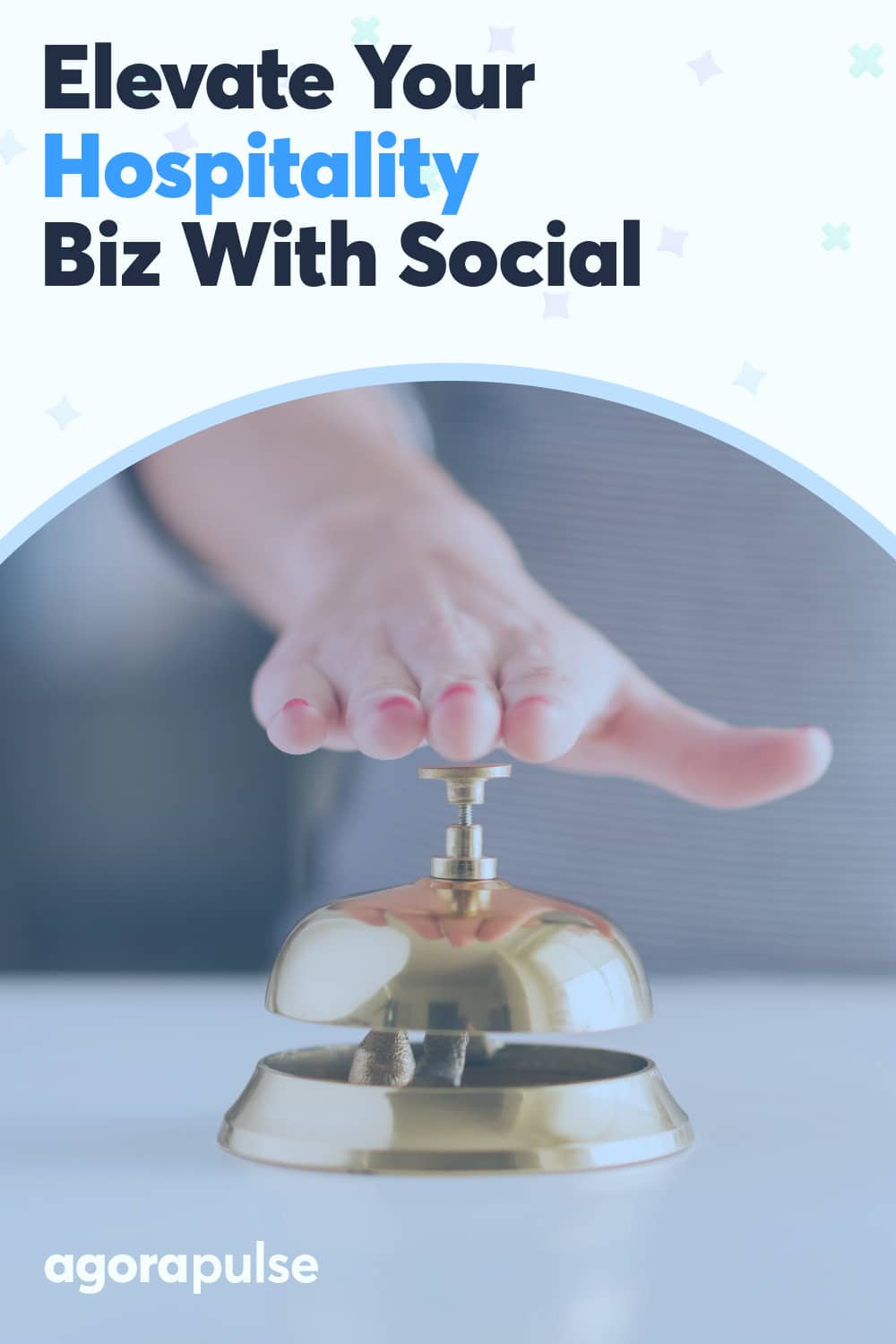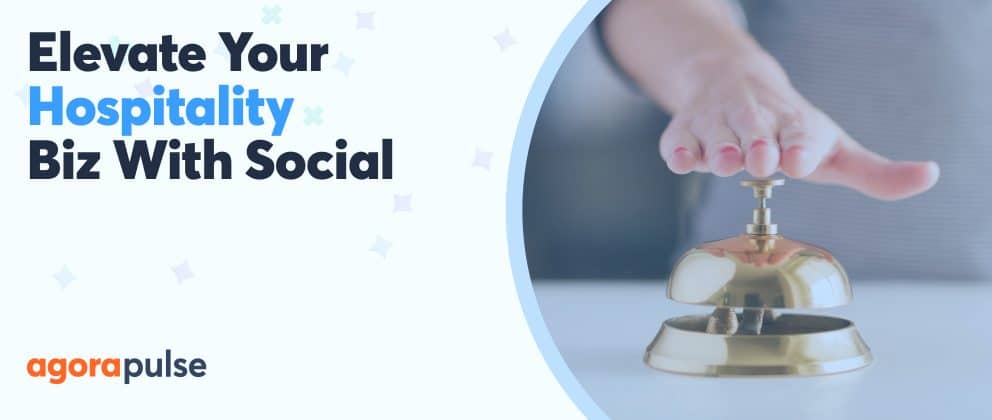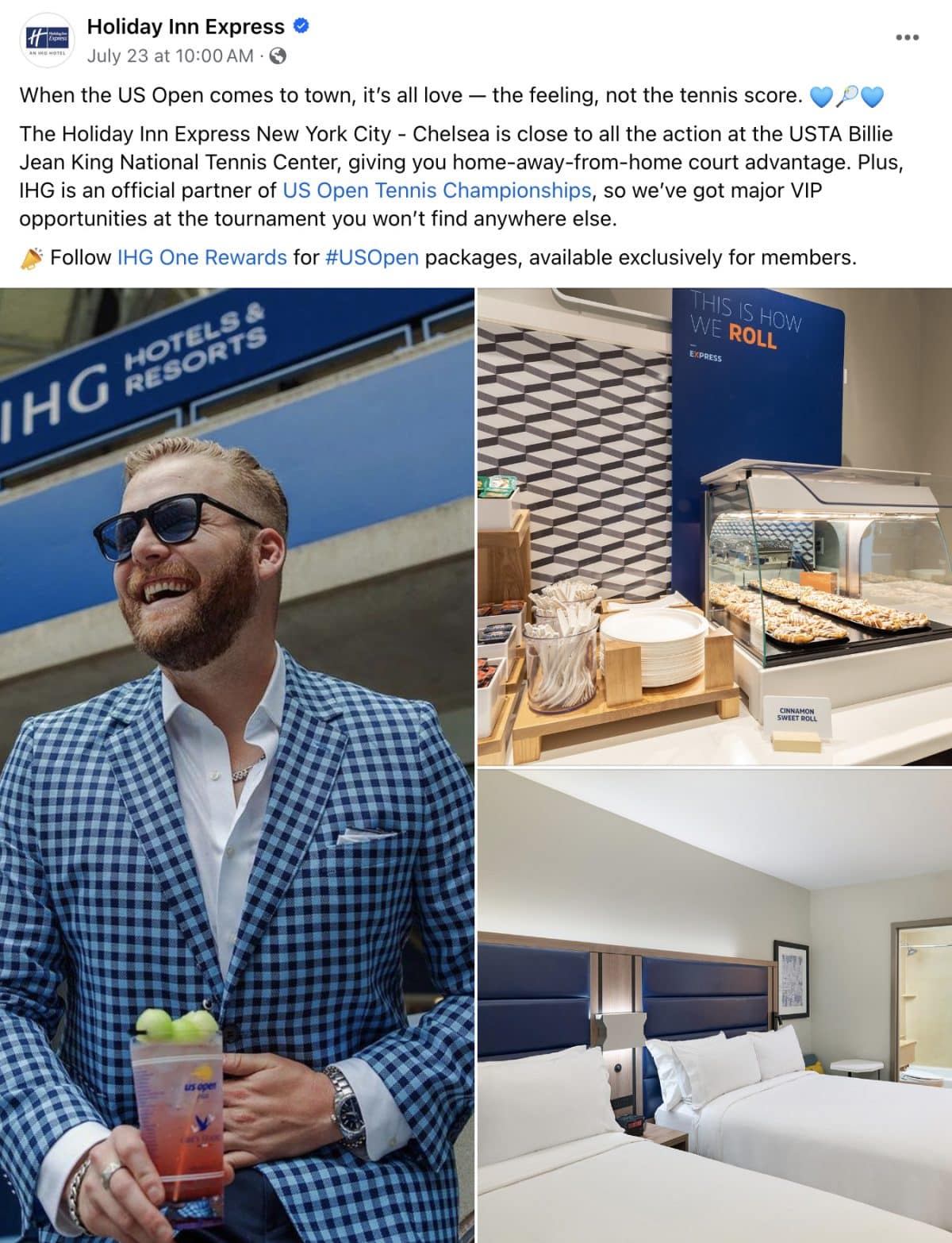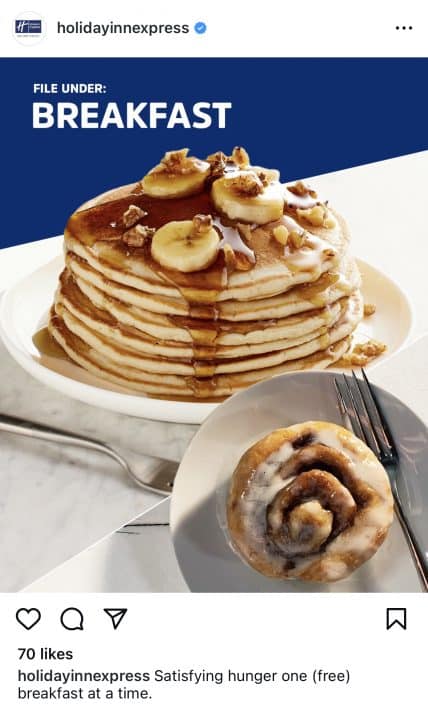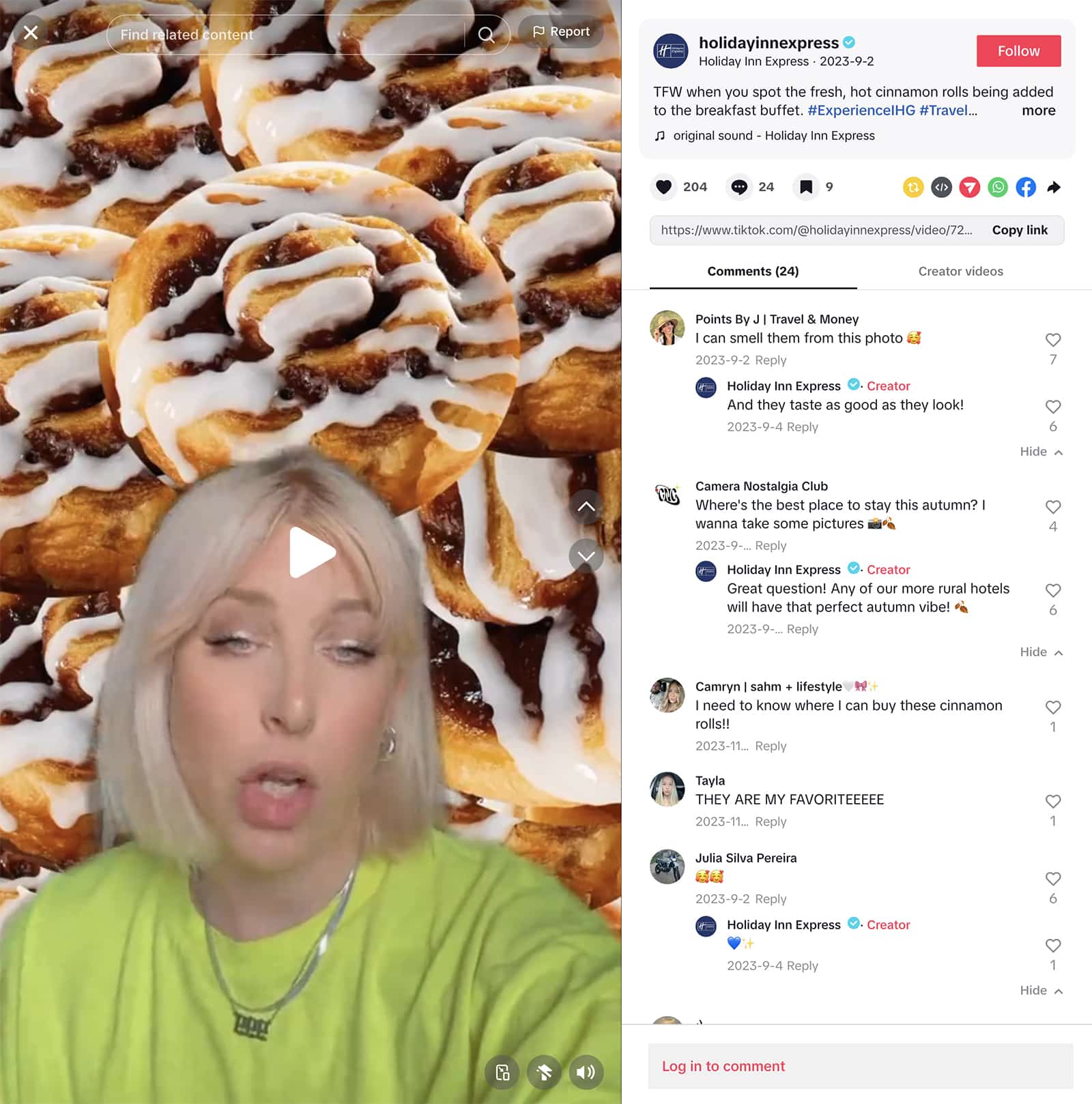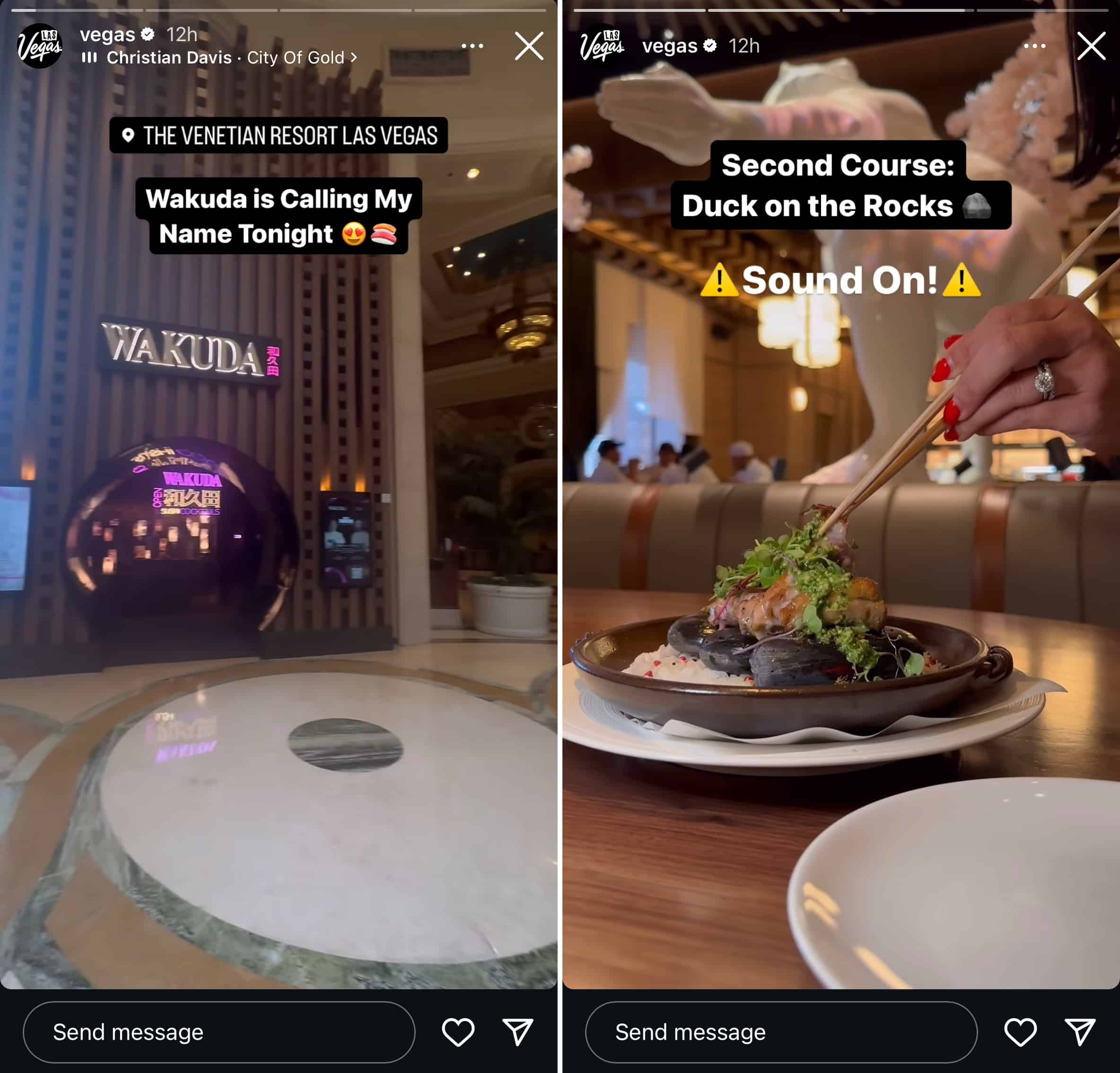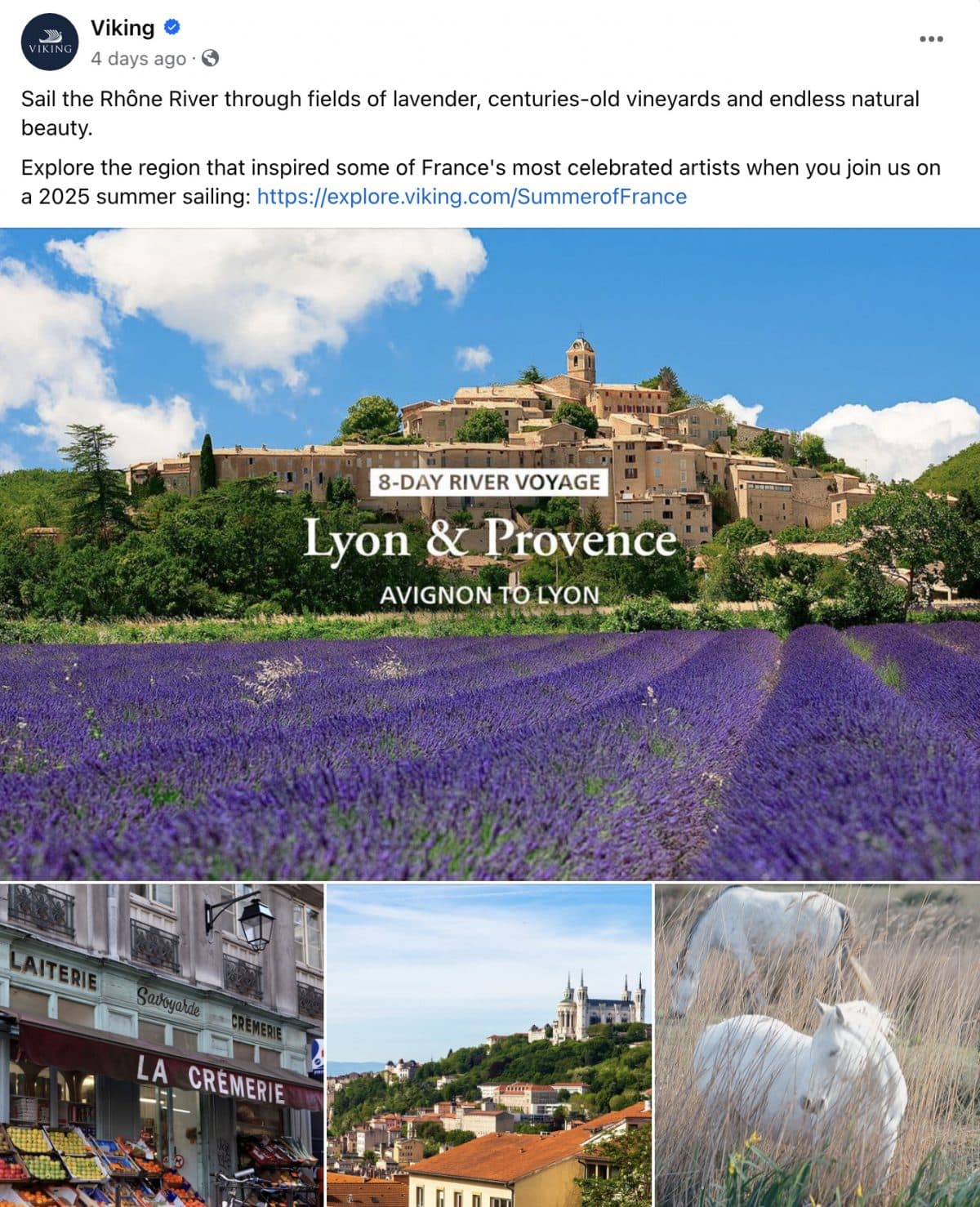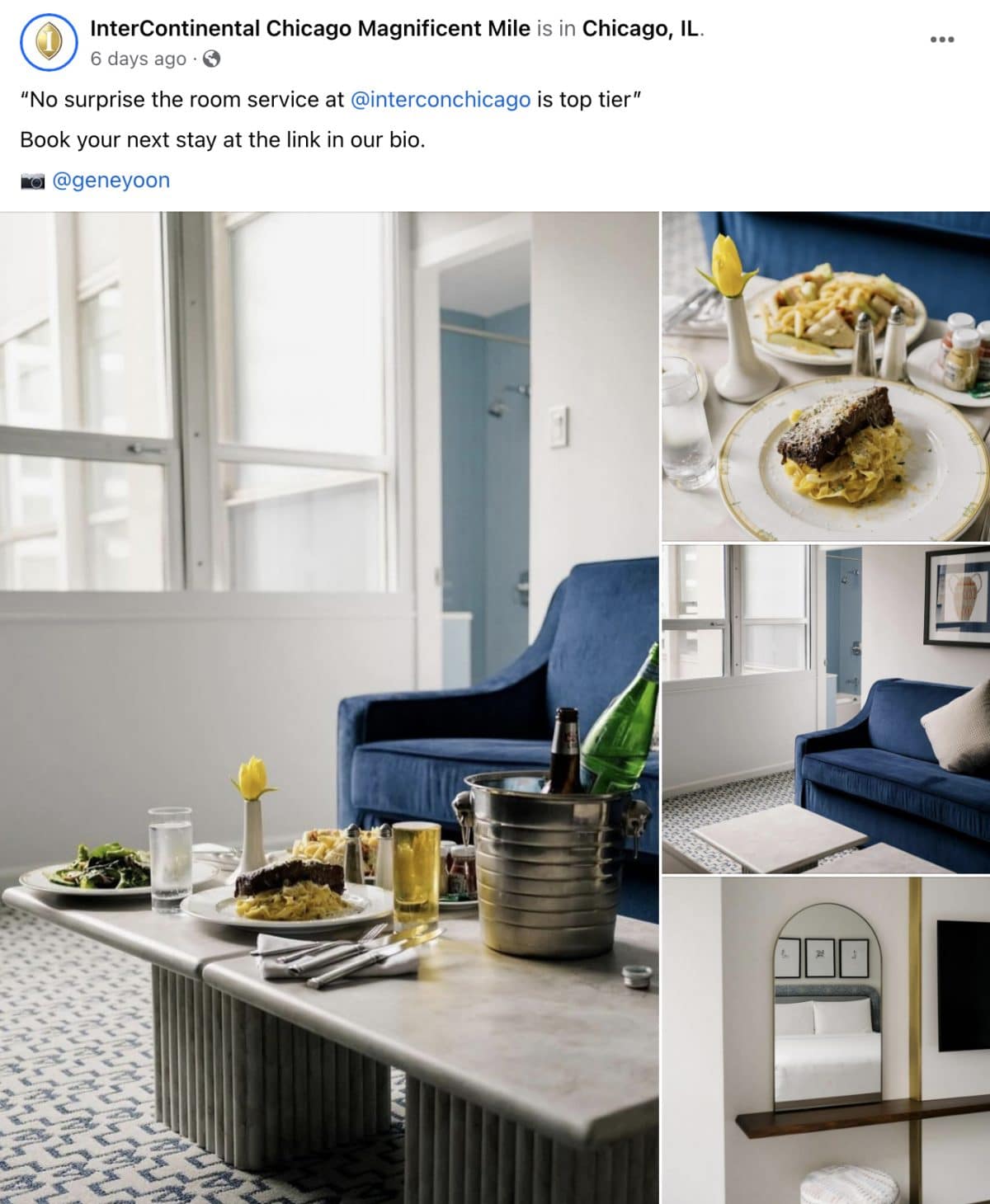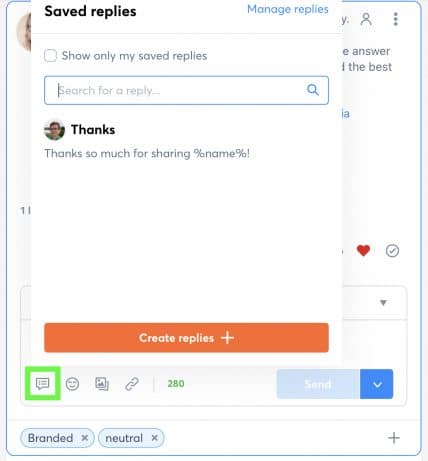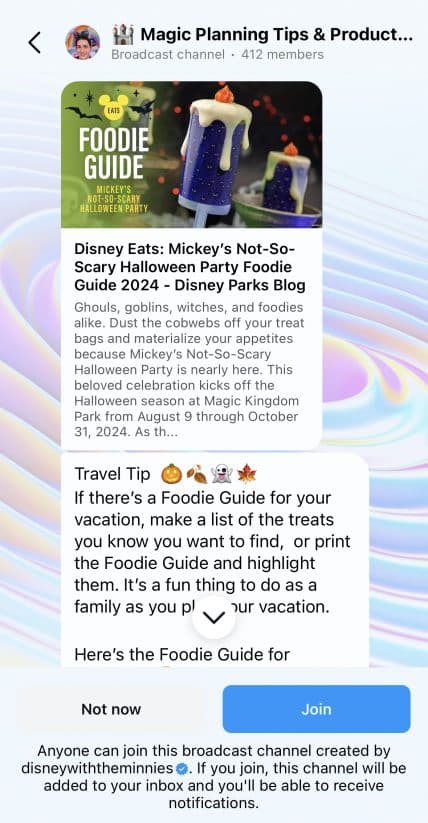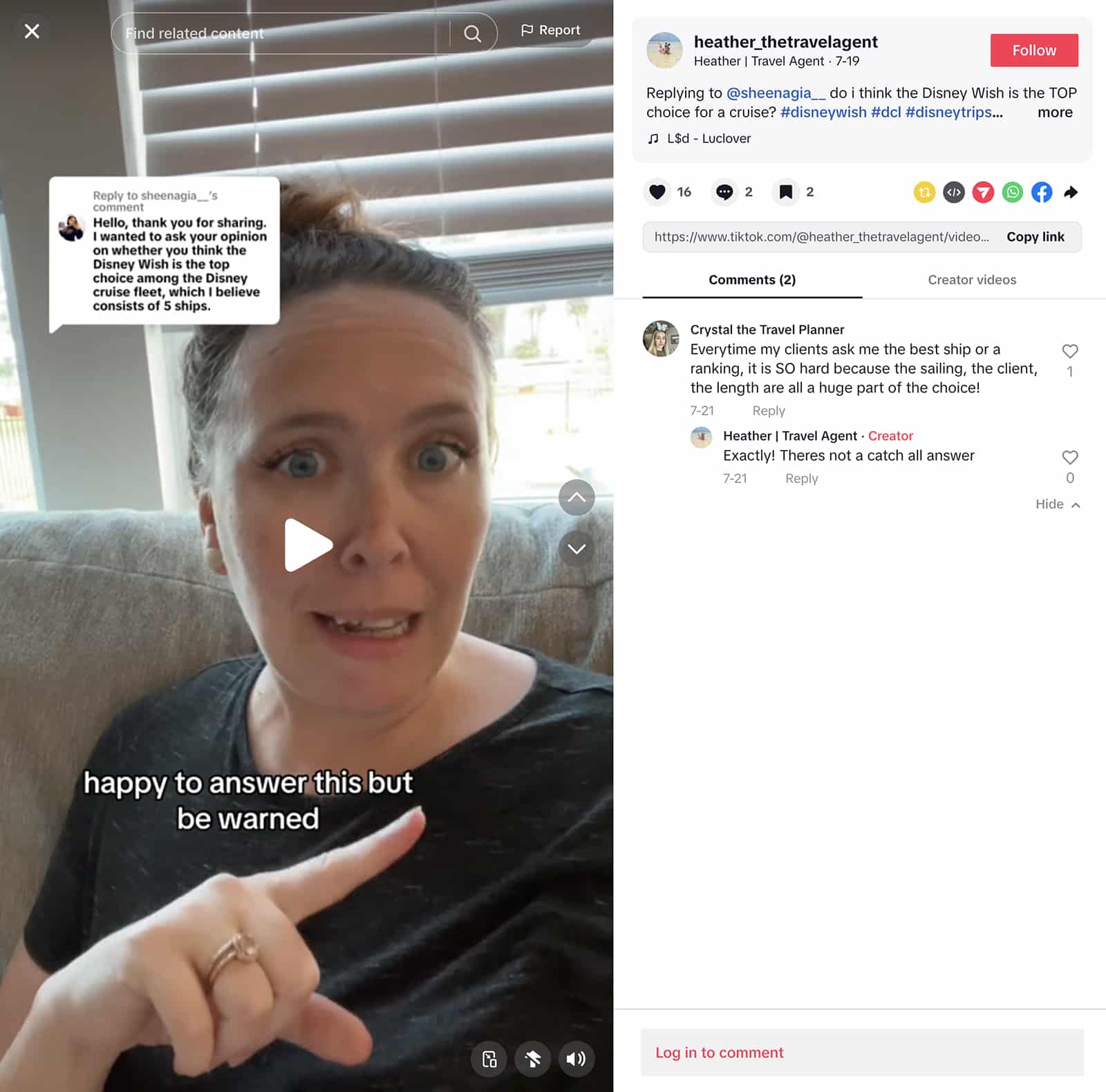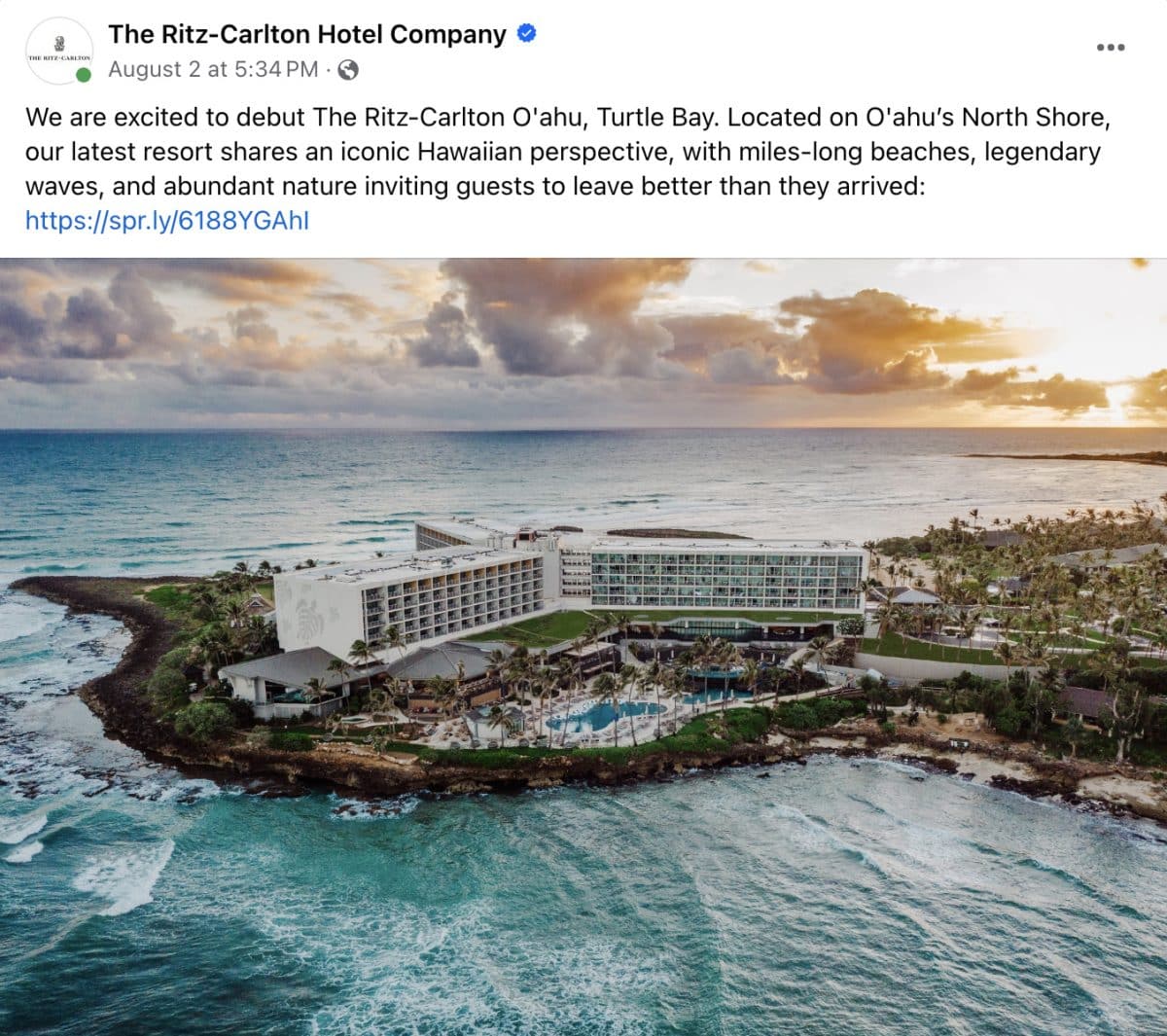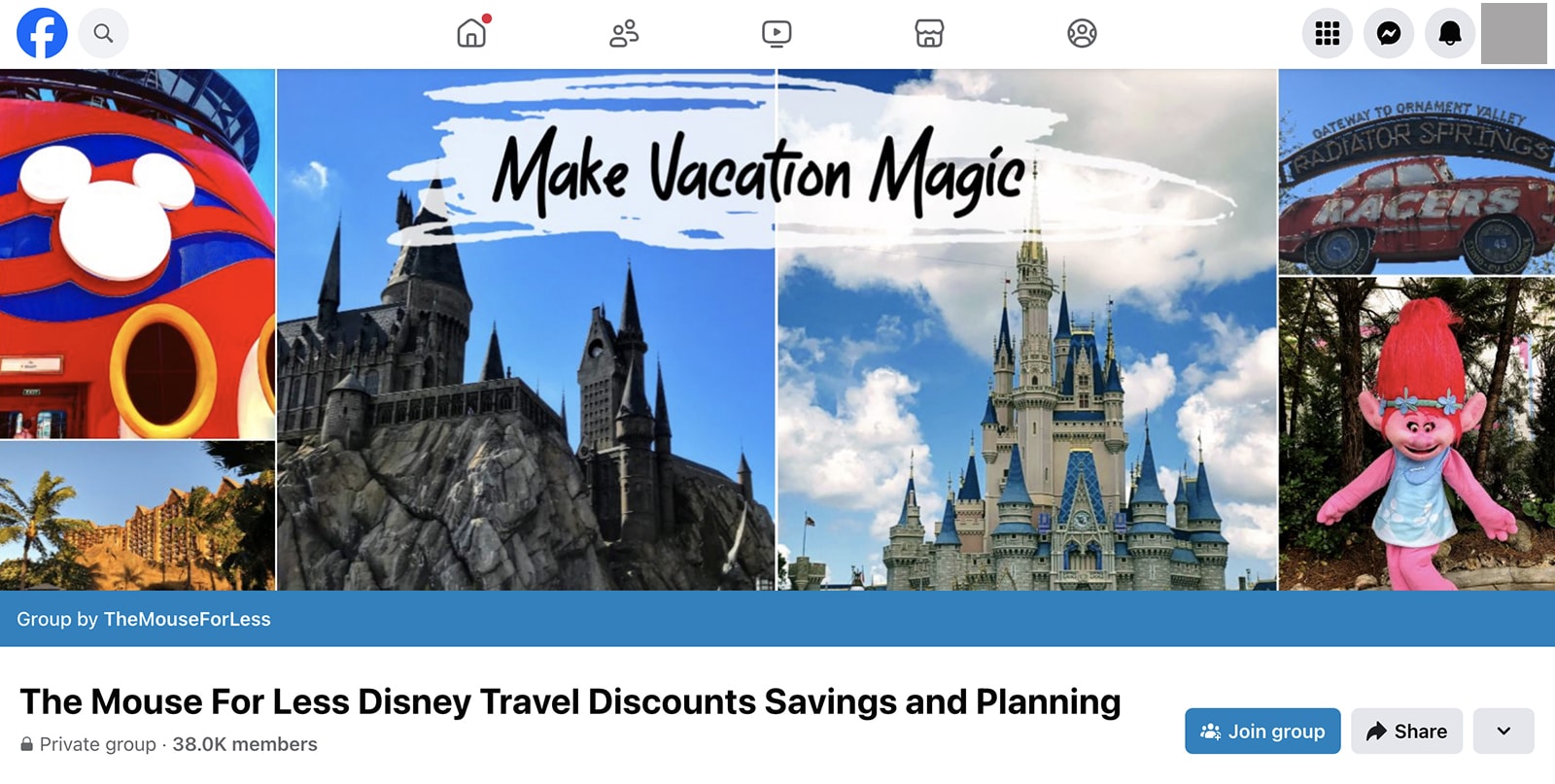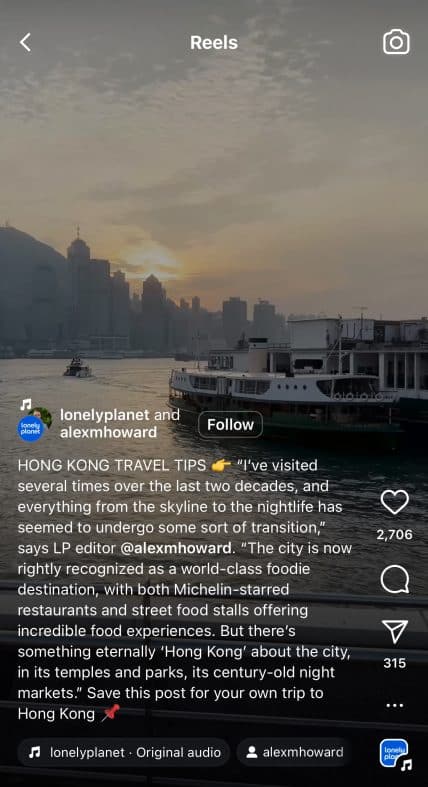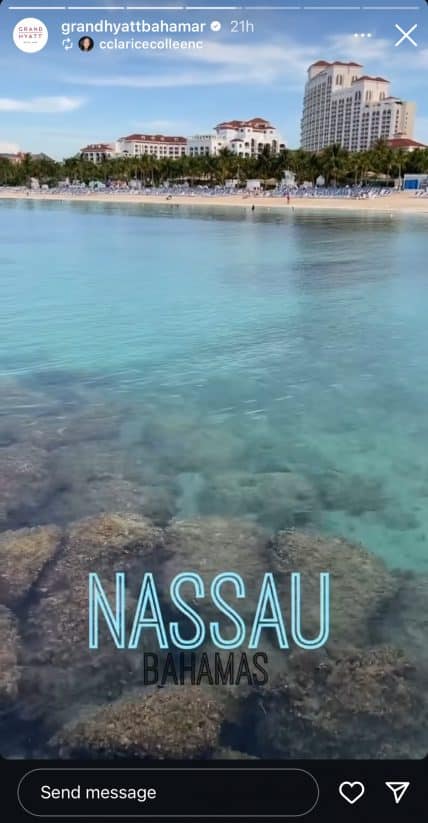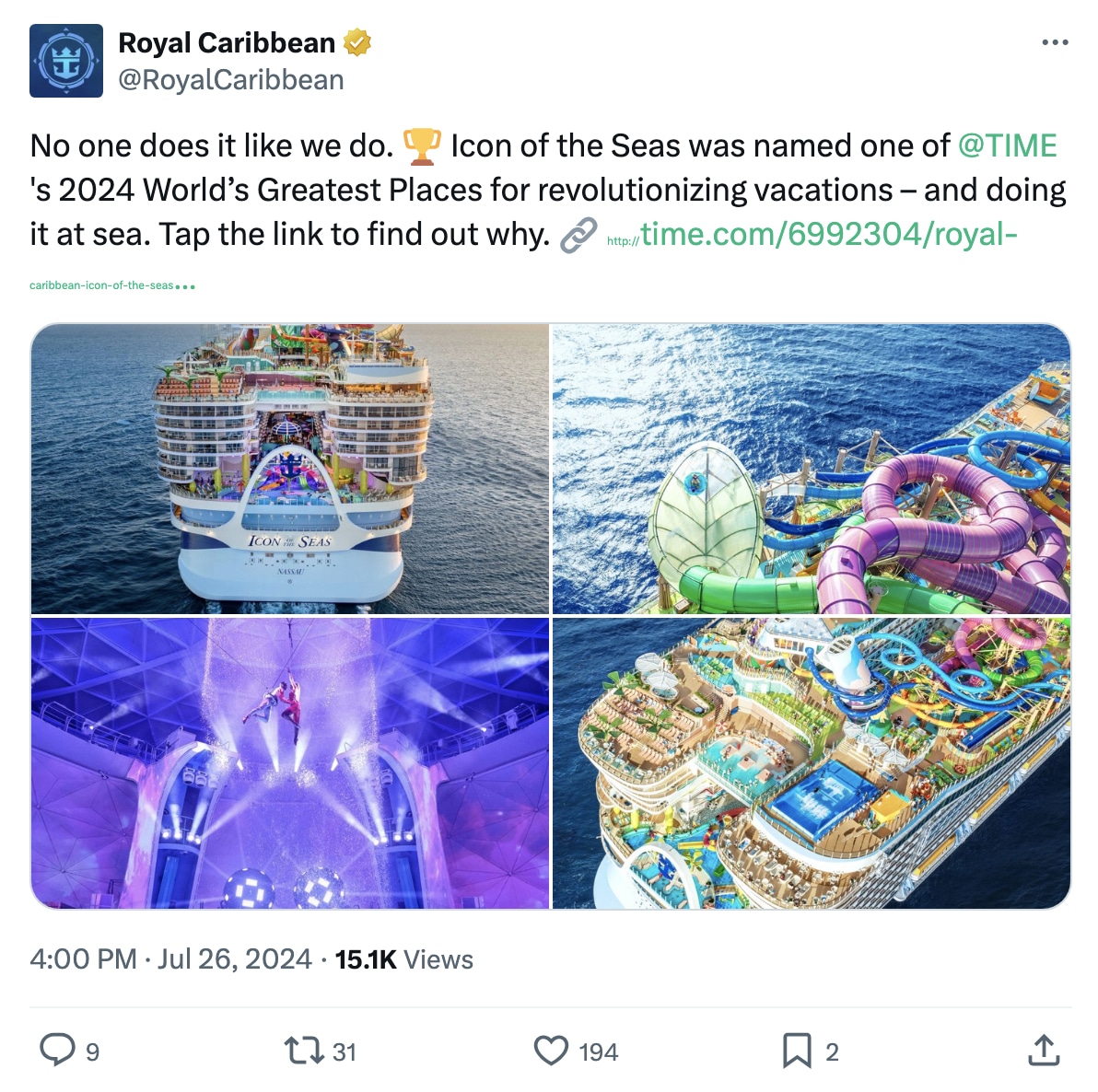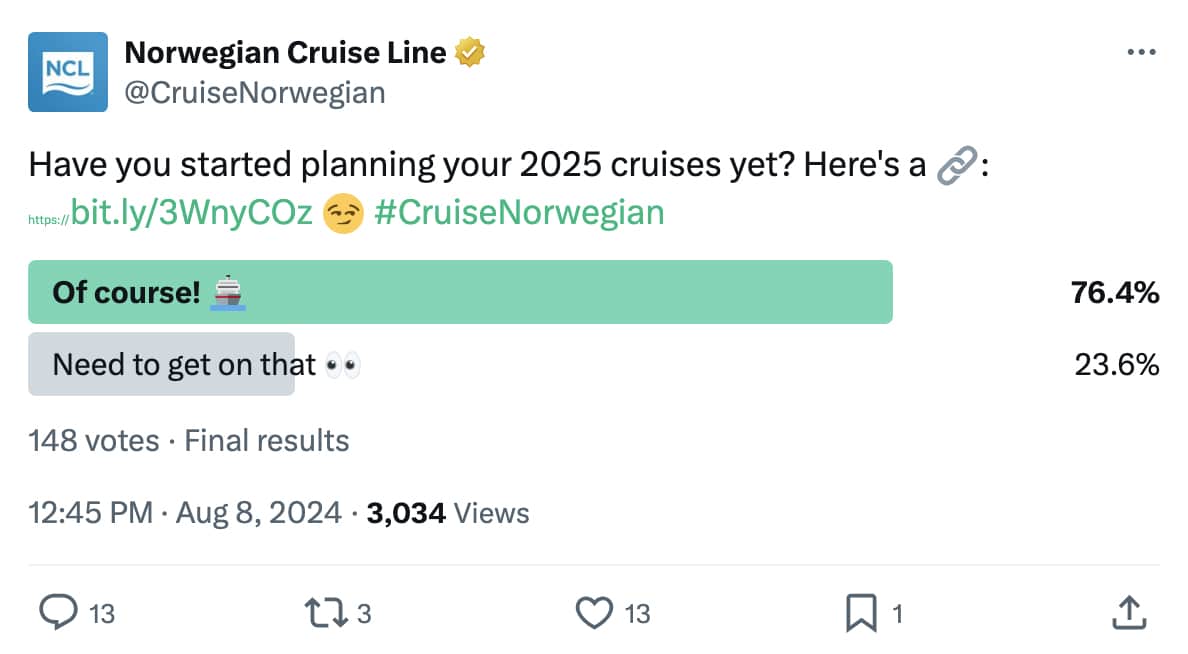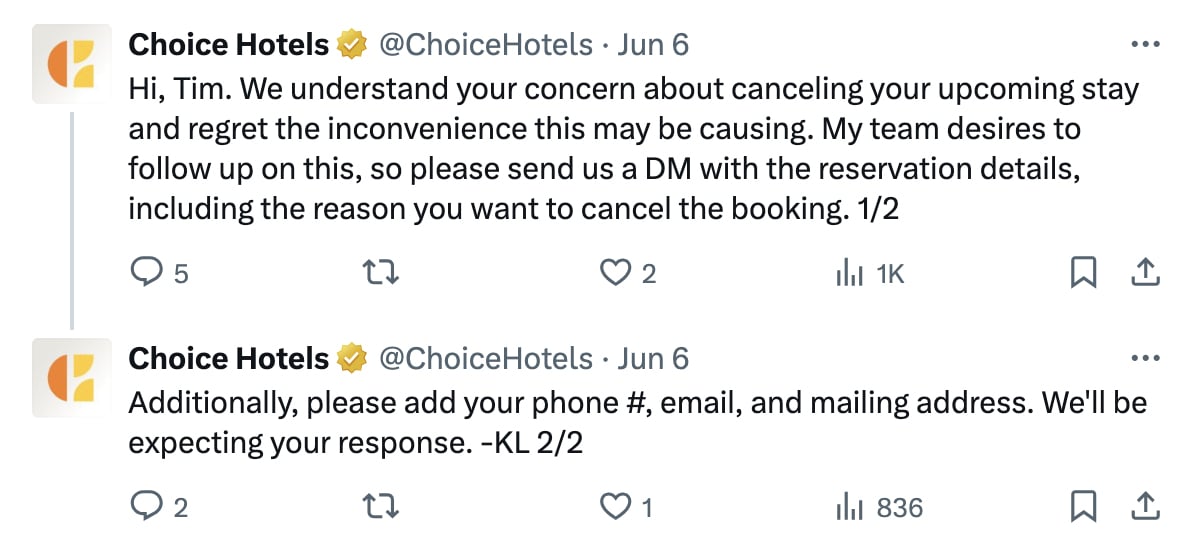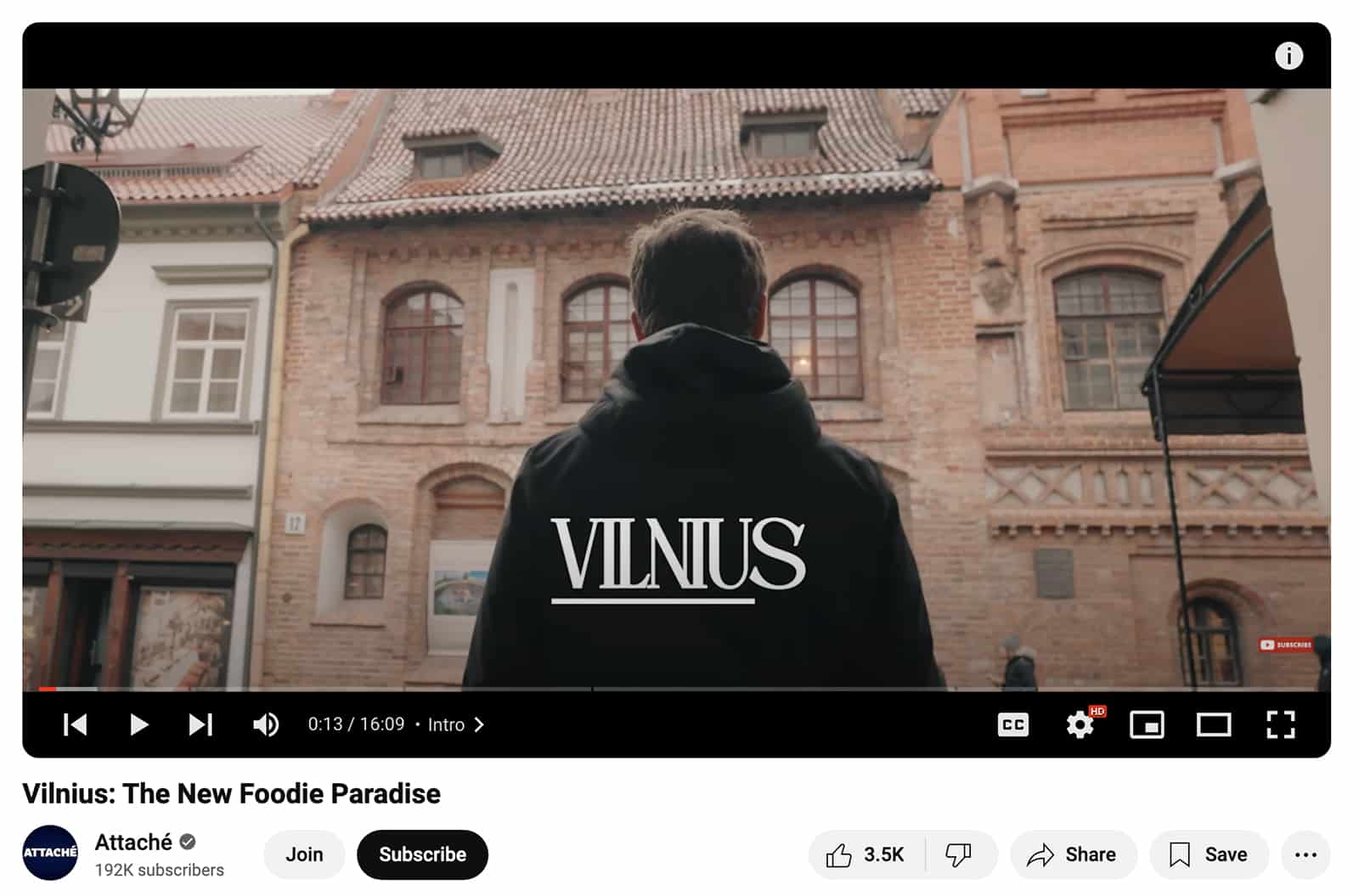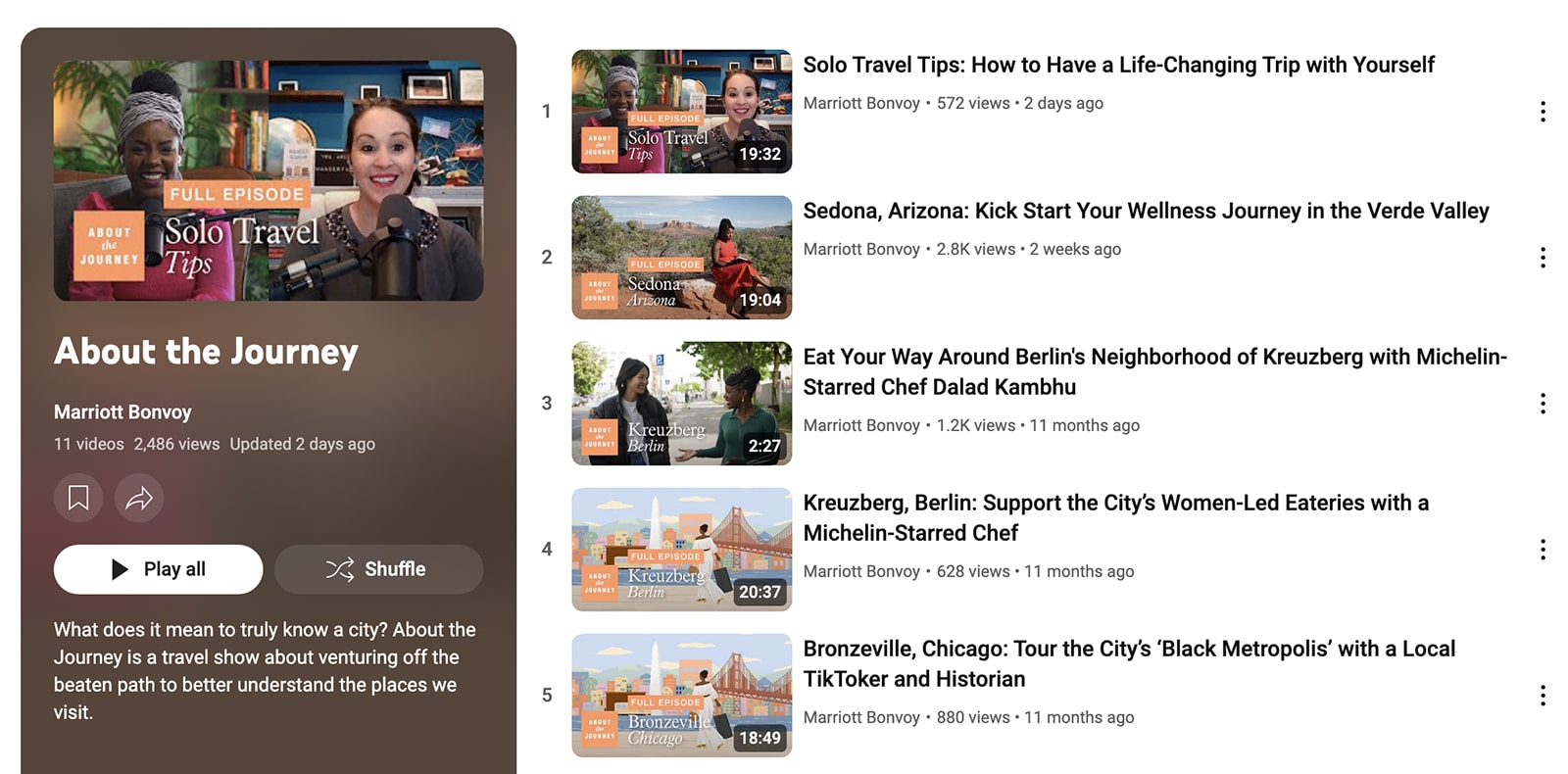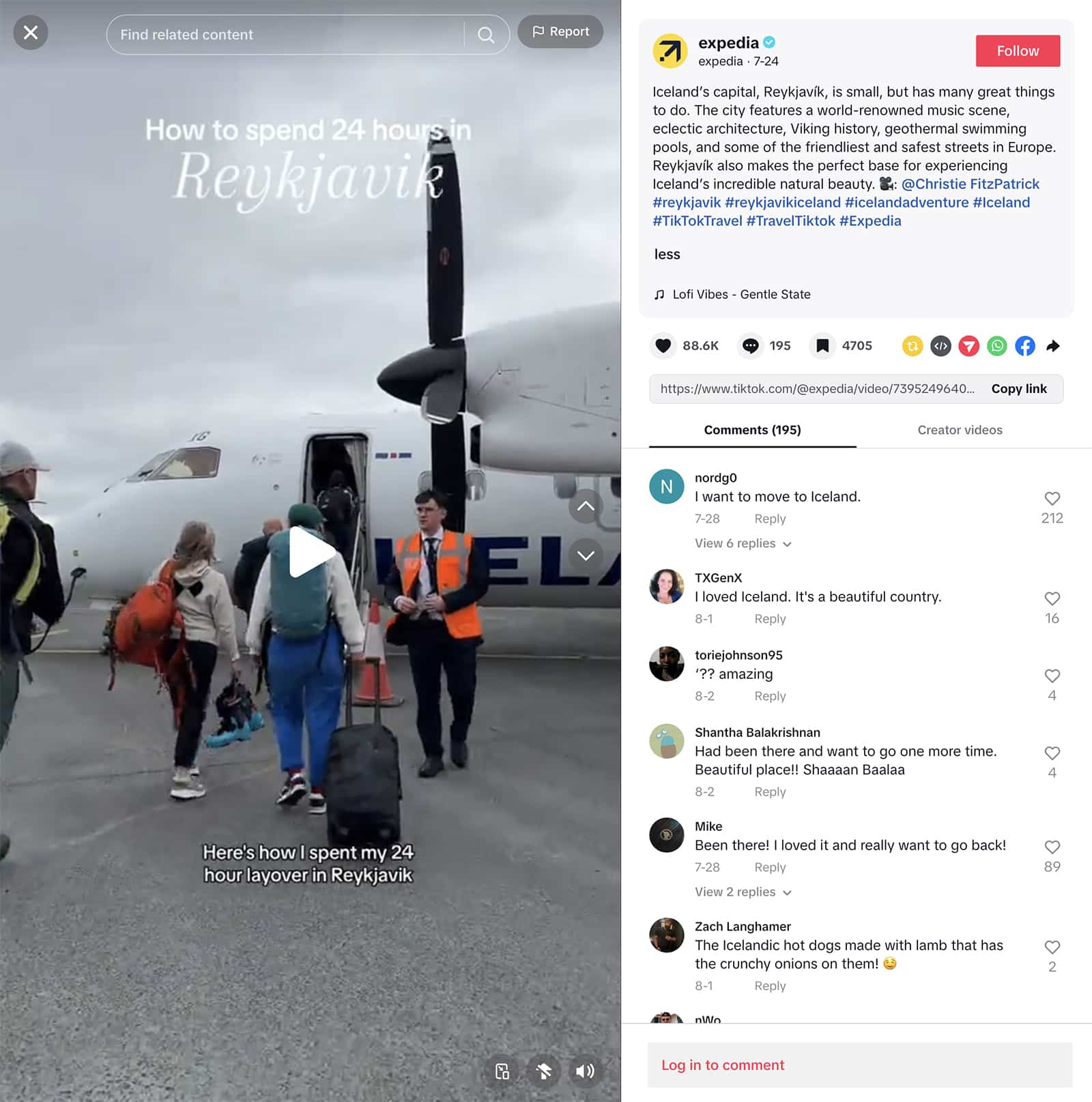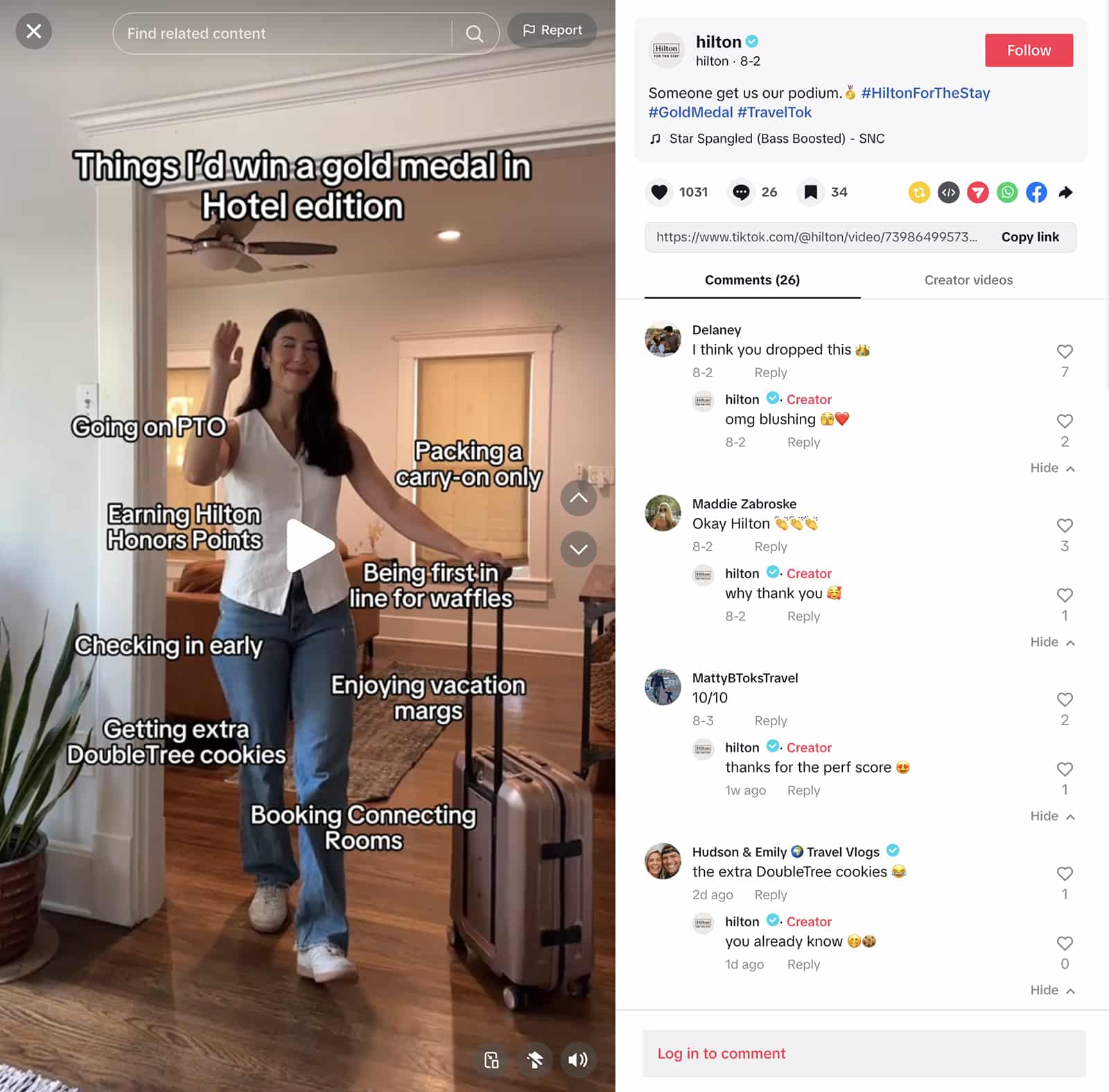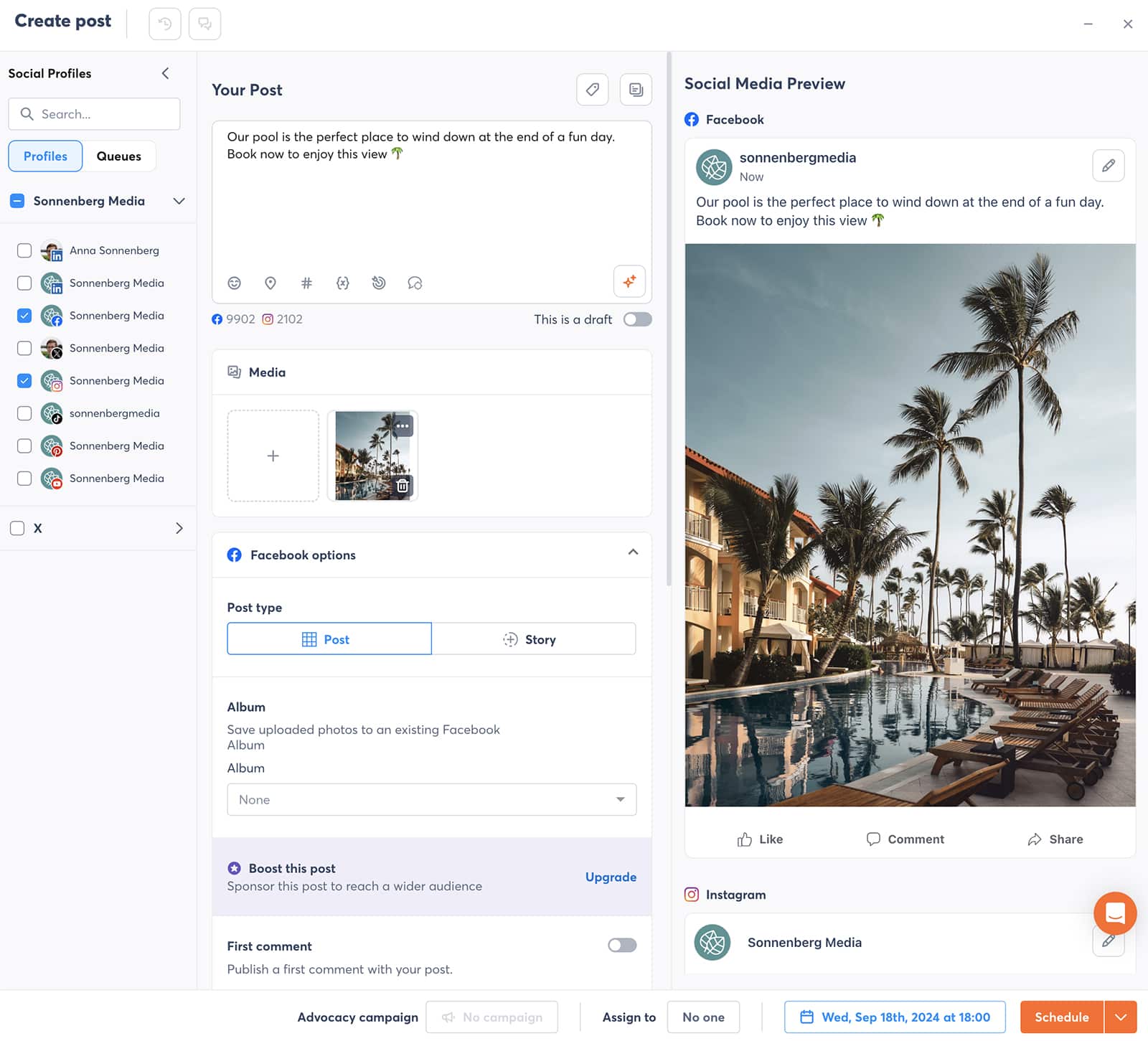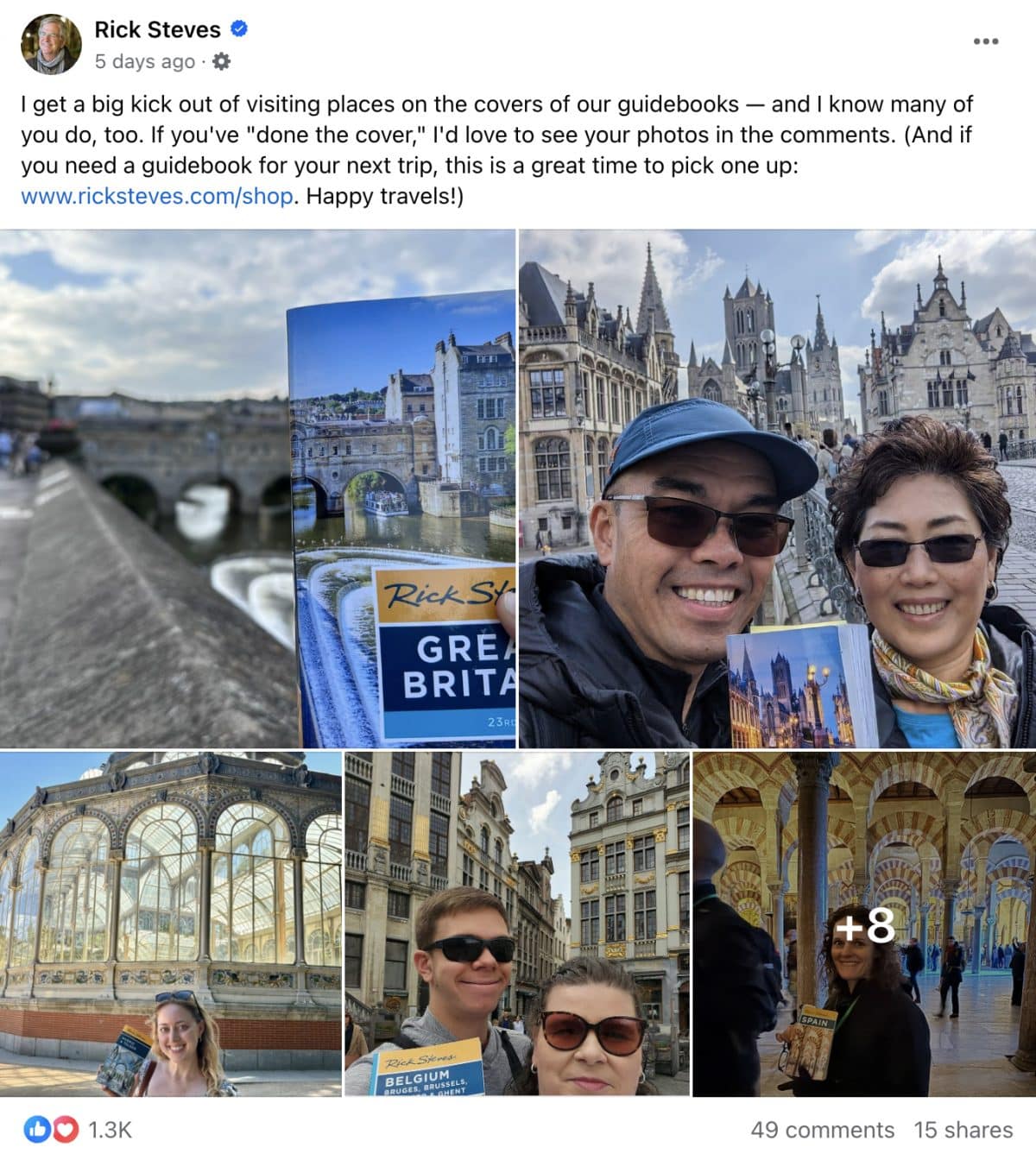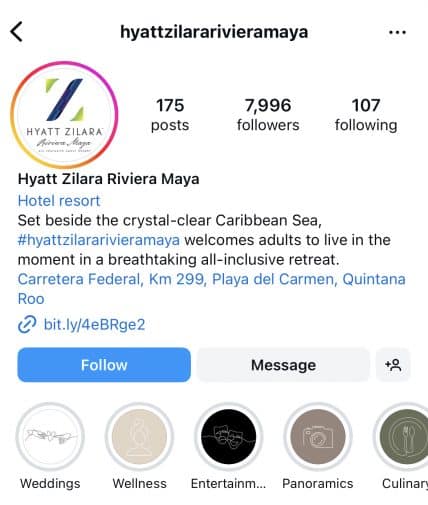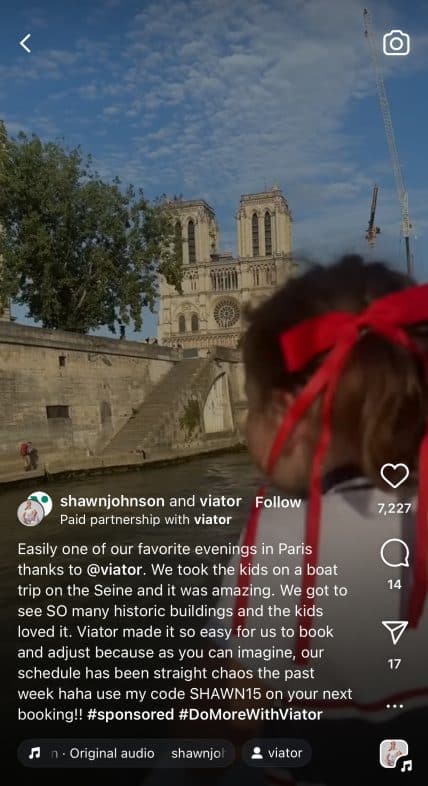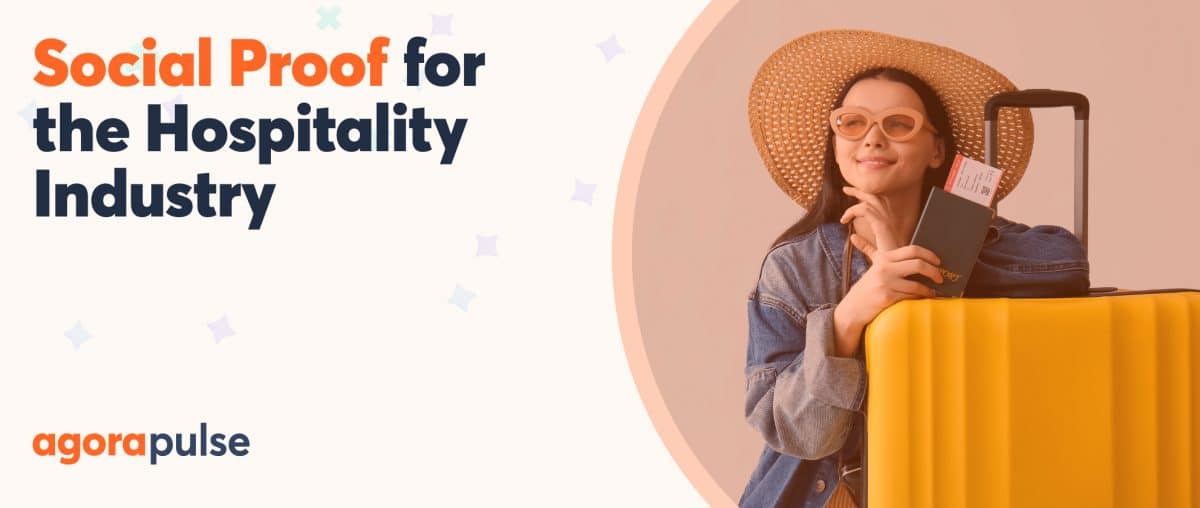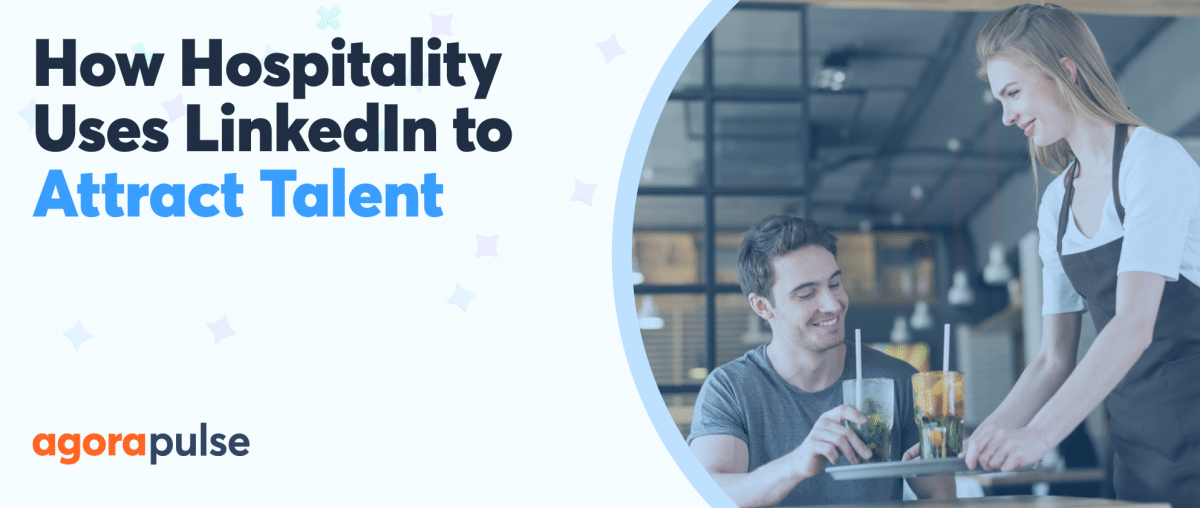For hotels and travel businesses, social media is an essential channel for customer acquisition, engagement, and loyalty. When planning trips, 75% of people use social media as a source of inspiration. And nearly half choose Instagram-worthy destinations to show off their travels online.
So, how can your brand leverage this channel to influence travel decisions and get more bookings? In this article, we’ll cover how to use social media marketing to attract, engage, and convert customers via organic posts, social ads, user-generated content (UGC), and influencer marketing.
Overview of Social Media for Marketing and Branding
Social media marketing is all about building your brand, connecting with customers, and promoting your business on the platforms where your customer base spends time. With social media, you can reach your target audience at every stage of the funnel—from awareness to consideration to conversion to loyalty.
Whether you’re in a competitive hotel category or an emerging travel niche, social media is ideal for showcasing your unique brand identity. From the look of your photos to the feel of your videos to the tone of your captions, your brand’s identity can set it apart from the competition and attract customers across platforms.
For example, Holiday Inn Express uses multiple social channels to promote the hotel chain’s affordable rooms and free perks. In a Facebook post, the brand spotlights a hotel near a major sporting event, showcasing the convenient location, comfortable rooms, and complimentary breakfast.
In an Instagram post, the brand highlights free breakfast offerings, a unique selling point for the hotel.
In a TikTok video, the brand uses trending audio to create a meme about customers’ love for the hotel’s free cinnamon rolls.
How Social Media Can Influence Customer Decision-Making
From Facebook posts to Instagram Stories to TikTok videos, social media gives hotels and travel brands countless opportunities to influence travel decisions and guide customers toward a conversion.
One way to capture interest and inspire bookings is through storytelling. Weave compelling narratives with photos, videos, and words to give followers a feel for the destination and the experiences that await.
The Las Vegas Convention and Visitors Authority uses Instagram stories to share experiences from a tourist’s point of view. The story below walks followers through a multi-course meal at upscale restaurant Wakuda, located inside The Venetian Resort.
No matter which format you opt to use, always aim to produce high-quality images and videos. When you prioritize visual appeal, you’ll have an easier time grabbing attention and holding interest as viewers scroll through their social media feeds.
On Facebook, Viking Cruises publishes eye-catching images with text overlays that quickly introduce the topic. The post below also includes several photos that give followers a glimpse of what to expect from the itinerary.
As a hotel or travel brand, you don’t always have to create original content for social media. Sometimes you can let customers do the talking.
When you share testimonials and reviews, you create social proof that has the power to influence customer behavior. Because 99.9% of consumers read reviews before making purchases online, sharing customer quotes on social media can positively impact followers’ travel choices.
In the Facebook post below, the InterContinental Chicago Magnificent Mile quotes a happy hotel guest, shares their photos, and encourages followers to book a similar stay.
User reviews are just one way to let customers do the talking. Influencer collaborations can also help you share authentic experiences while boosting brand credibility and swaying customer decisions. We’ll discuss influencer marketing in depth below.
How Social Media Can Provide Direct Communication and Customer Engagement
One of the biggest benefits of social media is the opportunity it creates for two-way communication. No matter which social platforms your brand uses, you can use them to engage with customers and followers.
In many cases, you can communicate with customers in real-time. For example, you can:
- Respond to customer questions via direct message (DM).
- Engage with followers’ comments on your social media posts.
- Provide customer support and assist with bookings.
To respond to customers more efficiently, use a unified social inbox. With Agorapulse, you can monitor comments and messages for all connected social profiles on a single browser tab. This means you can stay on top of all engagements without having to jump between tabs or sign in and out of accounts.
Agorapulse also supports saved replies. Create a library of responses to common questions or comments to reuse them easily. Before pressing “send,” personalize your reply or tailor your offer based on previous interactions with the customer.
On some social platforms, you have even more options for connecting with customers. For example, Facebook has groups that allow both brands and customers to post content and start conversations.
Instagram has broadcast channels where travel creators can share announcements and ask questions. Travel agent @disneywiththeminnies has a broadcast channel for sharing resources and polling followers.
On platforms like TikTok and Instagram, you can reply with a video when a written comment won’t do your response justice. In the TikTok video below, @heather_thetravelagent responds to a follower’s question about the top Disney cruise ships.
Key Social Media Platforms for Hotel and Travel Businesses
Before you invest resources into creating social media content, make sure to choose the best platforms for your brand. Let’s take a look at a few of the most important social media channels for hotels and travel businesses.
Facebook is ideal for telling travel stories through photos, short-form reels, and long-form videos. Since this platform allows external links in posts, it’s also great for linking out to booking pages, special offers, or news.
The Ritz-Carlton Hotel Company uses Facebook to announce new hotel locations and share links to resort landing pages. In all of its Facebook posts, the brand includes high-quality images to convey the upscale experiences that await at each hotel property.
To encourage customer loyalty, consider creating a Facebook group. There you can start discussions, members can ask questions, and your brand can reward loyal guests with special offers.
Sister travel businesses The Mouse for Less and The Magic for Less have a dedicated Facebook group for travelers interested in Disney and Universal Studios vacations. Members can use the group to learn about discounts and find resources to plan their trips.
If Millennials and Gen Z make up a large percentage of your target audience, plan to prioritize Instagram. Out of all social platforms, Instagram is the top choice for trip planning among these two groups.
Between feed posts, carousels with up to 20 images or videos, and short-form Reels, travel brands have plenty of options for visual storytelling. For example, you can create reels featuring mini-guides to destinations or carousels highlighting hotel amenities.
Lonely Planet uses both formats to publish visually appealing destination guides and travel tips. In the Lonely Planet Reel below, a travel editor walks viewers through a trip to Hong Kong, giving the guide a personal touch.
Because they automatically disappear in 24 hours, Instagram stories are ideal for sharing limited-time offers or less polished content that might not fit on your feed. Stories are also great for sharing UGC made by guests.
The Grand Hyatt Baha Mar uses stories to share guests’ content. This approach is helpful for thanking creators and giving followers a glimpse of how their visits could look.
X
X certainly supports visual content. However, hotel and travel brands tend to use it less for storytelling and more for announcing news, sharing time-sensitive updates, and participating in travel-themed X chats.
The Royal Caribbean post below announces a travel award and shares several eye-catching images. But to read the full story, followers have to tap the link.
Norwegian Cruise Line also uses X to share external links and promote offers. In the X post below, the cruise line uses the platform’s poll feature to ask followers about their upcoming travel plans.
Some hotel and travel brands also use X to provide customer support, and some have dedicated profiles for this purpose. In the Choice Hotels post below, the hotel chain provides time-sensitive assistance for a guest.
YouTube
Because both Gen Z and Millennials consider YouTube their second favorite platform for planning trips, it should be a priority for most hotel and travel brands. As a video-based platform, YouTube is ideal for creating immersive content like virtual hotel tours and complete destination guides.
Below, travel brand Attaché shares a long-form guide to the innovative food scene in Vilnius. The video description includes links to the brand’s other guides to Vilnius and nearby European cities, helping to boost views across the channel.
Another smart strategy for increasing video views on YouTube is collaborating with vloggers. When you work with vloggers, you can benefit from their talent and tap into their audience.
Travel creator Oneika Raymond hosts Marriott Bonvoy’s About the Journey series. In each episode, she welcomes various guests, who provide unique takes on destinations they know and love.
To maximize the visibility of your content, keep YouTube search engine optimization (SEO) basics in mind. Include keywords in video titles and descriptions to make them easier to discover via search. Experiment with thumbnails to determine which styles are best at attracting views.
TikTok
As a short-form video platform, TikTok is best for publishing engaging videos and entertaining memes for younger audiences—mainly travelers aged 18 to 34.
Expedia uses TikTok to share short videos featuring travel tips and 24-hour destination guides. The travel brand publishes content produced by accomplished travel vloggers, such as the guide to Reykjavik below.
When you create content for TikTok, keep trends in mind. Consider how you can make them relevant to your travel or hotel brand.
In the TikTok video below, Hilton shares the hotel brand’s take on the “things I’d win a gold medal in” viral trend. The brand also responds to top comments to build stronger relationships with followers.
Strategies for Effective Social Media Marketing
Whether you opt to focus on one or all of the platforms above, you need a social media marketing strategy to reach your goals. Use these tips to develop an organic and paid strategy for your hotel or travel brand.
Creating a content strategy
Before you begin creating content for social media, work with your team to set goals. Prioritize SMART social media goals, which are:
- Specific: Clarify what you want to achieve and why.
- Measurable: Choose a goal you can quantify so you’ll know when you’ve achieved it.
- Attainable: Pick a goal you can realistically achieve, given your available resources.
- Relevant: Focus on a goal that aligns with your organization’s business goals.
- Timely: Set a time frame, including milestone dates for major goals.
For example, suppose your hotel brand aims to drive more business with social media to meet the organization’s quarterly sales goal. Your social media goal might be to secure 500 bookings before the end of the quarter using a mix of YouTube videos, Instagram reels, and Facebook posts.
Next, map out a content calendar that supports your goal. Make sure to consider key dates like seasonal sales, industry trends, and local events.
With Agorapulse’s publishing calendar, you can add notes with general ideas and drafts of posts in progress. You can also schedule posts for specific times or publish them immediately.
You can easily cross-post between social profiles, too. Just create a single post, select all the profiles where you want to publish, and customize as necessary. For example, you may want to add a link to Facebook posts or hashtags to Instagram posts.
Leveraging user-generated content
Content created by happy guests can sway travel decisions just as much as (or even more than) branded content. As a result, it’s a good idea to supplement your team’s original content with UGC.
To collect UGC, encourage guests to share their experiences. If you plan to share their content in the feed, ask for permission first. Then credit the original creator in the caption.
Rick Steves asks followers to share photos in the comments of Facebook posts. Travelers get to show off their trips, and the brand gets to collect UGC showing people visiting the landmarks featured on travel guide covers.
The Hyatt Zilara Riviera Maya includes a hashtag in the hotel’s Instagram profile. When guests add the hashtag to their posts, the hotel can easily find the content and share it.
With Agorapulse, you never have to miss great UGC. When you set up a social listening search for your brand, you’ll get notified when an account mentions your profile or uses your hashtag on select social platforms.
To collect an even higher volume of UGC, incentivize guests. Consider running a contest that rewards guests for creating and sharing content. You might offer rewards points, a complimentary meal, or a free tour.
Collaborating with influencers
More than 40% of people take note of travel influencers when planning trips. In some markets (UAE, India, and Indonesia) influencers have an even greater impact on travel-related purchases.
No matter where your hotel is located or where your travel business is based, it’s worth experimenting with influencer marketing. The key is choosing influencers whose audiences align with your own and share similar interests, values, and demographics.
On Instagram, Viator partnered with Shawn Johnson to promote a tour of Paris. By recruiting the Olympian to promote the travel brand during the 2024 games, Viator made the collaboration both timely and relevant to its adventurous audience.
When you collaborate with influencers, make sure to set goals before launching the campaign. This way, you’ll be able to gauge whether the campaign is successful and make an informed decision about the next one.
Common influencer marketing goals include:
- Attracting more social media followers
- Getting views and increasing brand awareness
- Generating bookings and sales, which you can measure via the influencer’s unique promo code
Paid advertising and promotions
To reach more ambitious social media marketing goals, consider using ads. Even with a small budget, you can create a marketing funnel that attracts new customers and guides them toward a conversion.
With brand awareness campaigns, you can introduce your hotel or travel brand to a new audience and generate interest. Then, you can use remarketing campaigns to target people who have engaged with your brand or content.
However, each social platform requires its own unique strategy. On YouTube, test a mix of vertical short-form video ads and longer in-stream ads. On Facebook and Instagram, experiment with both video and image ads.
Monitor the results closely to measure ad campaign results. In addition to tracking conversions, pay attention to metrics like impressions and clicks.
Based on your findings, iterate on your ads. For example, if your video ads have a lot of views and clicks but few conversions, experiment with another offer or optimize your landing page.
Measuring Success and Adapting Strategies
The best way to confirm whether your social media strategy is successful is to measure the results. Use these guidelines to measure organic results, create social media reports, and adapt your social media strategy.
Key performance indicators (KPIs)
It’s tempting to monitor all available social media metrics. However, the most important metrics to measure are the ones that align with the goals and KPIs your team set when developing your strategy.
Some of the most useful metrics to measure include:
- Audience growth: Measure follower growth.
- Brand awareness: Monitor impressions, video views, and mentions.
- Engagement: Track likes, comments, shares, and saves.
- Conversions: Measure clicks and conversions like bookings and reservations.
- Return on investment (ROI): Monitor revenue and ROI from conversions.
- Sentiment: Track positive and negative customer sentiment.
Analyzing social media data
You can certainly monitor metrics for each social profile using native tools. However, checking separate social media platforms tends to be overly time-consuming, especially if you monitor multiple profiles or brands.
With Agorapulse, you can track KPIs for all your social profiles in one place. Our social media management platform tracks everything from audience growth and impressions to engagement and brand awareness. As a result, you can easily see whether you’ve reached your KPIs.
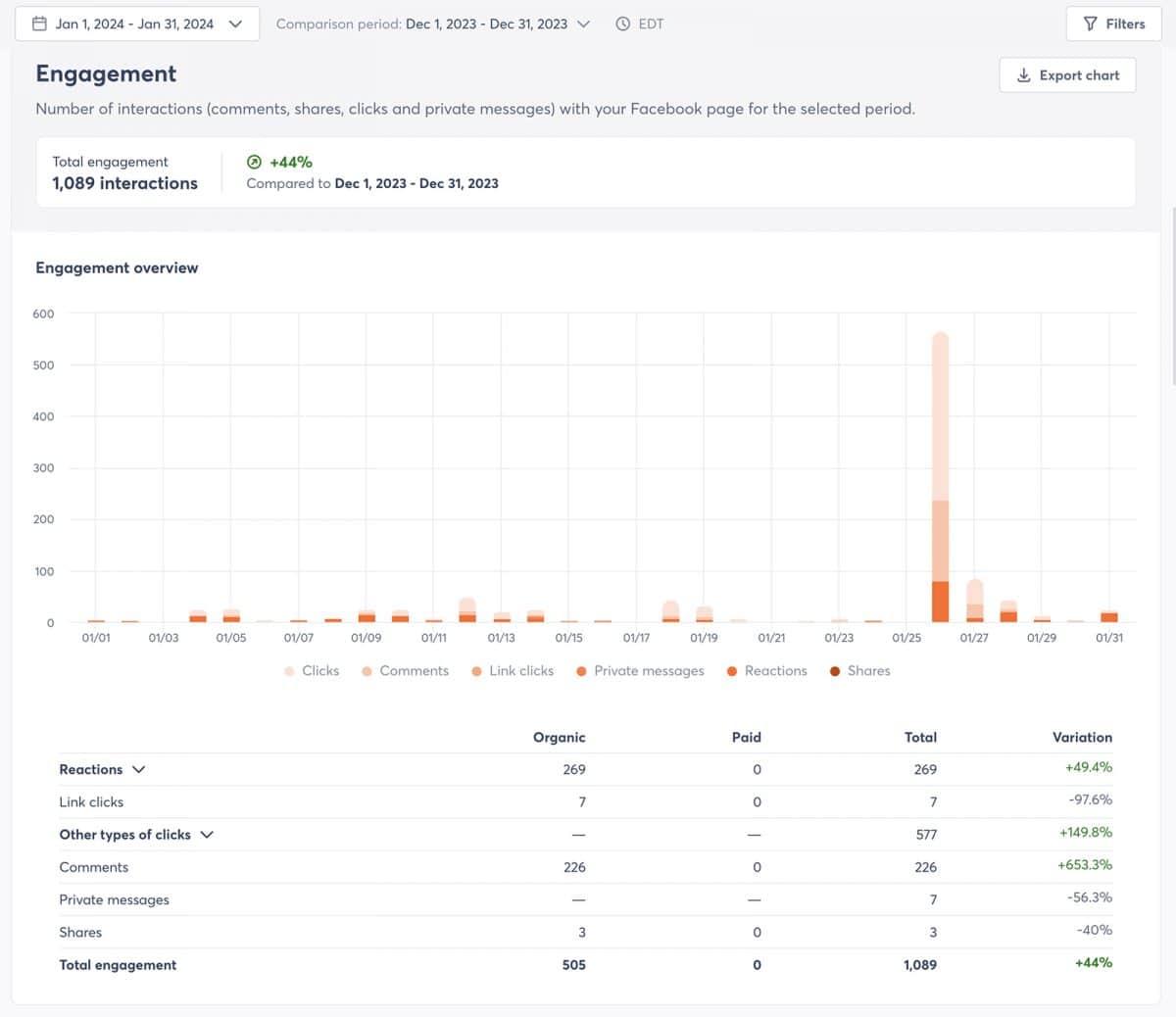
Agorapulse Facebook engagement report
When you connect your brand’s Google Analytics 4 account to Agorapulse, you can track conversions, too. Our social ROI reports show all conversions attributed to social media, including breakdowns by channel, profile, campaign, and even content type. This way, you know exactly how much value your efforts are generating.
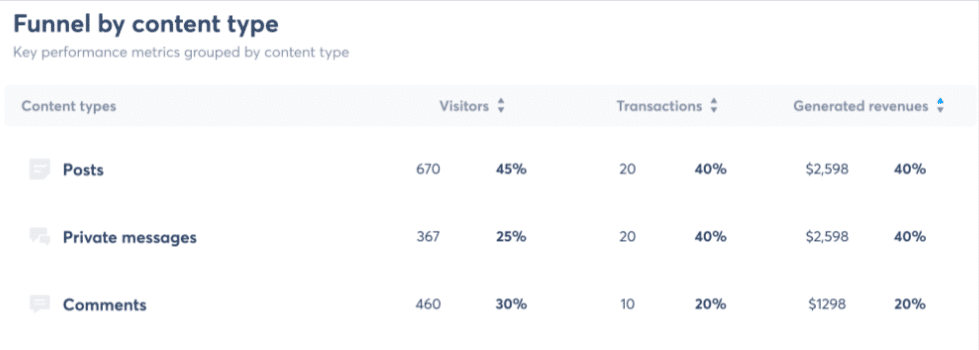
Agorapulse ROI report
Since Agorapulse offers competitive reports, you can spot trends and see how your social media performance has changed over months, quarters, or years. With these insights, you can make data-driven decisions to refine your strategy and improve your results.
Continuous improvement
Social media marketing isn’t something you can set up to run in the background without oversight. To succeed with social media, you have to stay on top of trends and aim to keep improving your results.
To monitor trends, follow industry outlets like Social Media Today. It’s also worth following the social profiles and blogs of the platforms your brand uses. For example, the Instagram blog shares announcements and tips.
When new features and content types launch, plan to experiment with them. Some may not work for your audience. But when you find any that do, you can include them in your content strategy.
Don’t forget to keep an eye on the competition. Copying their approach is never a good idea. But they can provide inspiration and give you ideas for approaches to try with your audience.
Final Thoughts on Social Media for Hotel and Travel Businesses
Whether you want to grow your customer base, inspire travel, or book more reservations, a strong social media strategy is key. With a mix of organic and paid content, UGC, and influencer partnerships, you can build relationships with followers, attract loyal customers, and get more business.
To manage these moving parts effectively, you need the right tool. As a complete social media management solution, Agorapulse is the only tool you need. Agorapulse handles everything from scheduling content and managing engagement to social listening and social analytics for all your social profiles.
